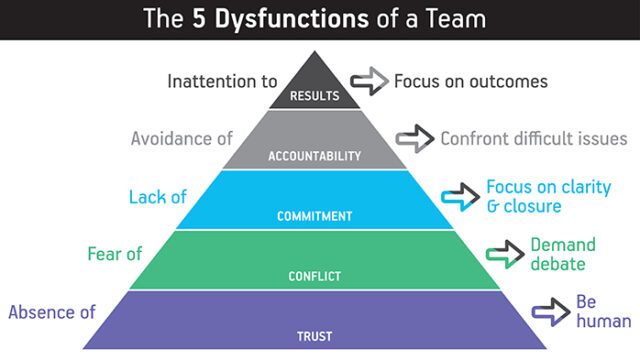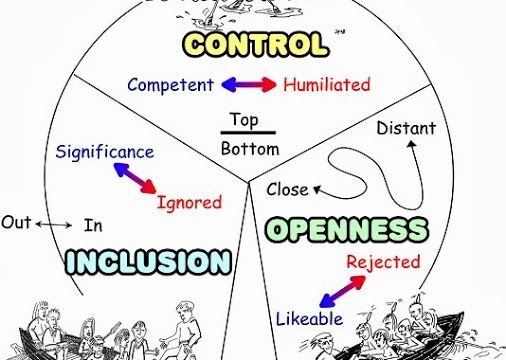Adaptive or Authoritative Leadership?: Situational Leadership Theory
Adaptive or Authoritative Leadership?: Situational Leadership Theory
The Situational Leadership Theory, also known as Hersey-Blanchard Situational Leadership Theory, is a prominent leadership model that emphasizes adapting leadership styles based on the specific situation and the needs of team members. The developers of the theory, Paul Hersey and Ken Blanchard, recognized the importance of flexibility in leadership and the need to match leadership behaviors to the competence and commitment levels of team members.

Brief Background:
“Leadership is not something you do to people. It is something you do with people.” Ken Blanchard
Ken Blanchard, a best-selling author and renowned management expert, was recognized for his contributions to management and leadership training. Paul Hersey, an American psychologist, was known for his work in the field of organizational behavior and leadership. Hersey and Blanchard collaborated to develop the Situational Leadership Theory in 1969.
Research or Need:
The Situational Leadership Theory emerged as a response to the need for a flexible leadership approach that considers team members' varying abilities and motivation levels. It recognizes that there is no one-size-fits-all leadership style and that effective leaders must adapt their behaviors to their team members' specific situations and development levels.
Summary of the Theory:
“People differ not only in their ability to do but also in their ‘will’ to do.” Paul Hersey
The theory includes identifying four leadership styles: directing, coaching, supporting, and delegating. These styles are determined by the team member’s competence and commitment levels. The theory suggests that leaders should adjust their style to provide the appropriate level of guidance and support to maximize team member performance and development.
• Directing: When team members have low competence and high commitment (enthusiastic beginners), the leader takes a directive approach by providing specific instructions, guidance, and close supervision.
• Coaching: If team members have some competence but low commitment (disillusioned learners), the leader focuses on coaching, providing support, encouragement, and feedback to enhance their skills and motivation.
• Supporting: When team members have moderate to high competence but variable commitment (capable but cautious performer), the leader adopts a supporting role. They facilitate participation, listen to concerns, and provide the necessary resources to sustain motivation and performance.
• Delegating: When team members demonstrate high competence and commitment (self-reliant achiever), the leader can delegate tasks and decision-making authority, granting them autonomy and trust to excel in their roles.

You can access a short example of leadership types with the video in this link.
Situational Leadership Theory shares some similar aspects with another theory regarding leadership: Likert's Four Styles of Leadership Theory, developed by Rensis Likert. The importance of tailoring leadership strategies to meet the requirements of followers is emphasized by both the situational leadership theory and Likert's leadership models. They understand that effective leadership entails adapting one's actions to the situation and the followers' level of preparation. Both theories emphasize how important it is to consider follower maturity and competence when choosing the best leadership style, whether that be giving explicit guidance and monitoring or empowering and assisting followers. Both theories also consider how dynamic leadership is and how adaptable leaders must be to enhance follower performance and accomplish organizational objectives. They can be seen as complementary approaches to understanding and improving management and leadership practices.
Importance In the Field:
The theory is of great importance in the field of leadership as it provides a practical framework for leaders to enhance their effectiveness. By understanding the needs and capabilities of their team members, leaders can tailor their approach, thereby increasing motivation, productivity, and overall organizational performance.
Real-life Example:
• Imagine a project where a team leader, Sarah, is working with two team members. As a new employee, Tom requires clear instructions and close supervision, so Sarah adopts a directing style, providing guidance and support. On the other hand, Lisa, a skilled and motivated team member, benefits from autonomy and decision-making authority. Sarah adopts a delegating style, empowering her to take ownership of her work. By adjusting her leadership approach to meet the individual needs of Tom and Lisa, Sarah maximizes their potential and enhances overall team performance.
• Imagine, an emergency room, has just received a large influx of patients that have been critically injured in a bus crash. With such a large number of patients in the emergency room, the emergency room supervisor must implement a "telling" style of leadership to direct the emergency room workers in an efficient manner. This requires the emergency room supervisor to provide constant supervision and regular direction to all emergency room staff to ensure that all patients are seen and taken care of in a timely manner.
Advantages & Disadvantages of Situational Leadership:
Situational leadership offers numerous benefits for both leaders and teams or organizations. Some advantages of implementing this theory include:
• Flexibility: Leaders have the freedom to choose the most suitable leadership style for each specific situation, allowing for adaptability and responsiveness.
• Simplicity: Situational leadership is relatively straightforward, requiring leaders to assess the situation and adjust their approach accordingly. It avoids rigid guidelines and promotes intuitive decision-making.
• Employee Comfort: By tailoring the leadership style to match individual needs, situational leadership creates a more comfortable and supportive environment for employees. This enhances employee satisfaction and engagement.
• Development Focus: This leadership approach recognizes and addresses the varying levels of employee development. It considers each employee's skill level, needs, and readiness for increased responsibility, fostering growth and improvement.
While situational leadership offers benefits, there are also potential drawbacks to consider when implementing this style:
• Potential Confusion: Constantly changing leadership approaches to address different needs may lead to confusion within the organization. Team members might struggle to understand consistent expectations and may find it challenging to adapt to frequent changes.
• Short-Term Focus: Situational leadership prioritizes short-term goals, potentially overlooking long-term ones. Leaders must strike a balance between immediate needs and the organization's broader vision for sustained success.
• Task-Driven Environments: Situational leadership may not be well-suited for environments that involve repetitive tasks or require strict adherence to standardized procedures. The flexible nature of this approach may be less effective in such structured and task-oriented settings.
• Judgement of Maturity: The success of situational leadership relies on leaders' ability to assess employees' maturity levels accurately. Some leaders may struggle to effectively evaluate employee readiness and inadvertently provide a leadership style that is not well-suited to a particular individual or team.
Relevance for trainers:
Trainers may incorporate the Situational Leadership Theory into their education sessions due to its practicality and benefits. By facilitating this theory, trainers equip aspiring leaders with the tools to adapt their leadership style to different situations, thereby improving their ability to motivate and guide their teams effectively. Understanding the theory also enables trainers to provide practical scenarios and exercises that develop participants' leadership skills.
Relevance for Organizations:
The Situational Leadership Theory offers immense value to organizations by promoting adaptable leadership approaches. This theory helps leaders navigate dynamic environments, tailor their leadership styles to individual team members, and foster a culture of engagement and growth. By embracing this theory, organizations can achieve higher levels of employee satisfaction, productivity, and overall success.
You can access a summary of situational leadership theory with the video in this link.
Sources:
https://situational.com/situational-leadership/
https://resources.kenblanchard.com/whitepapers/why-a-situational-approach-to-leadership-matters
https://helpfulprofessor.com/situational-leadership-examples/
https://www.indeed.com/career-advice/career-development/situational-leadership
Web Link
Video
Founder
Related Topics
Adaptive or Authoritative Leadership?: Situational Leadership Theory 0 reviews
Login to Write Your ReviewThere are no reviews yet.








